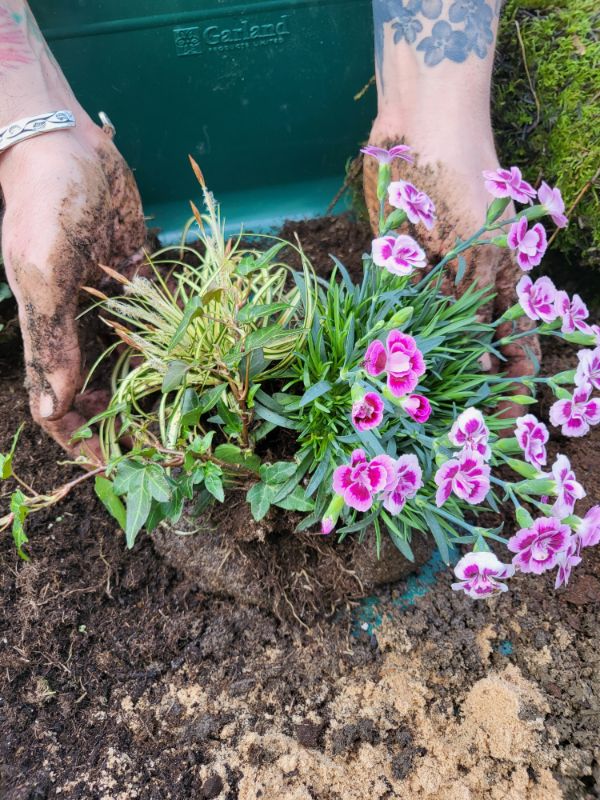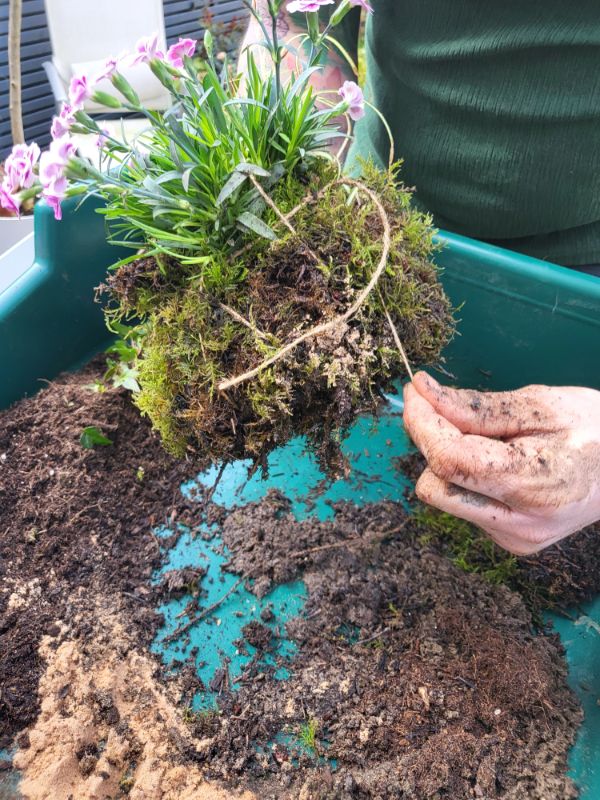If you’re starting to think about what’s going to fill your hanging baskets this season, hang tight – I’m going to tell you about a beautiful alternative that you’ll want to consider!
The typical hanging baskets plants – fuchsias, begonia, petunias and more – are fun and colourful, making any house look brighter and more homely. However, if you’ve planted the same hanging baskets year after year, could it be time to try something different?
Let me introduce you to the concept of tamandama. This unique type of plant placement might be far more subtle than a mound of in-your-face petunias, but it could be the finishing touch that your garden is looking for – and you might even manage to start a new trend on your street!

What is tamandama?
Tamandama refers to multiple ornamental plants grown in a ball of moss. It’s an Indonesian concept, which draws from the Japanese ‘kokedama’ which literally translates to ‘moss ball’ and usually features a single plant. Tamandama can be placed on a surface, such as a tray on a north facing windowsill, or suspended in the air using twine. You can make a feature of your tamandama inside, or use it in your garden! Just make sure you don’t place it in an area where it’ll get full sun, as this will dry out the moss too much.
Which plants can be used in a tamandama?
Almost any plant can be used in a tamandama, depending on its size and where you plan to feature it in your house or garden. Indoor plants that suit a tamandama include orchids, succulents, ferns, training plants and small palms. Outdoor plants include ivy, violas, cyclamens, daffodils and ornamental grasses.
I created a tamandama using ivy, carex and Dianthus (mini carnation) Pink Kisses. The Dianthus is such a versatile plant that can be used in a wide range of displays and locations, from mixed containers, to rockeries, to windowsills (and even as a ‘living bouquet’).
It’s perfect for a hanging tamandama, thanks to its small size – but that gorgeous pink colour is by no means ‘small’! Pink Kisses stands out amongst the lush green moss, and looks even better when paired with foliage plants to really help those pink tones shine.
How to make a hanging tamandama
Try your hand at making a hanging tanamdama using my tutorial below. You will need:
- 4 parts peat-free multi-purpose compost
- 2 parts sharp sand
- 1 part heavy compost (such as John Innes No. 3)
- A bowl/bucket to mix your soil materials
- Water
- Sphagnum moss
- String (at least 2.5 metres)
- Scissors
- Whatever plants you would like to include (I’ve used Dianthus ‘Pink Kisses’, Ivy and Carex ornamental grass)

Method:
1. Mix all the soils together well. Add water until you have a stiff cake mix-like mixture.

2. Mould the mixture into a ball and gently squeeze out excess moisture.

3. Split the ball in half.

4. Arrange your plants in the split (you may need to knock some soil off the roots so that they fit neatly within the tamandama), then push the two halves together around the plants.

5. Lay out your moss, and wrap it around the ball, holding your tamandama tight so that it doesn’t fall apart.

6. Cut your string to around 2 metres in length, then wrap it tightly around your tamandama both horizontally and vertically, so that it secures it all together. Tie the string in a knot once you’re happy with how secure it is.

7. Use the rest of the string to create the cable from which your tamandama hangs. Fold the string in half, then tie it to the string that’s wrapped around the tamandama.

8. Hang your tamandama in a shaded position. Water when dry – but don’t let it dry out completely or the moss will die. Give it a good drink by dunking it into a bucket of water and leaving it for around 5 minutes before re-hanging. Do this once a week.

Want to follow along with my video tutorial? Watch below!
View this post on Instagram



